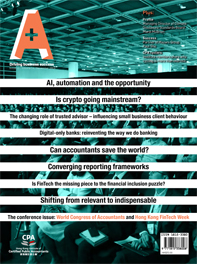You don’t have to be an athlete to run a strong marathon. Anybody can do it. I have coached runners from different walks of life and at different levels in terms of speed, from teenagers to young adults, to retirees and the elderly. Some runners, like myself, have even overcome serious illnesses and continued running. Since recovering from chronic leukemia, I have finished 12 marathons, such as the World Marathon Majors with 10 other runners within 211 days. Here are a few tips on finishing a marathon.
Set targets and research
Setting targets is the key to success. First, pick a marathon and set a target finish time. Decide whether you want to simply finish it or beat a personal record. You should set a time to beat, and start training to meet that target. Secondly, research the route and study its overall gradient and landscape, such as whether there are slopes. You can then draft a plan for the whole race by dividing the course into sections and calculating what your average pace should be. It’s also helpful to anticipate the day’s weather by checking the forecast the week leading up to the event.
Training
Training will develop your muscle memory and allow your body to adapt to long-distance runs. Begin training three to four months in advance (now if you’re planning on running the Hong Kong marathon), and have a weekly training schedule. Endurance is the name of the game, so your schedule should include both short and long distance runs at various paces, repeated runs, and interval runs – which are especially good for increasing speed and stamina.
“A good trick is to wear new socks and run in old shoes. Worn socks may create more friction against your insole, resulting in blisters after the halfway mark.”
Food for thought
You should decrease training intensity two weeks before the race day for your body to recover and accumulate potential energy. A week before, do a fast 10-kilometre run in the morning – either before or after breakfast. This will free up room in your body to store glycogen or glucose three days before the race. Your diet should consist of high protein foods and less carbohydrates, such as chicken, beef, pork, mutton, fish, eggs, and some vegetables. The days leading up to the race is when your body starts to store glycogen, which will convert into energy for the race, so it is ideal to consume more carbohydrates such as rice, noodles, pasta, bread, potatoes, fruits and vegetables.
Pace yourself
After training for several months, marathon runners should be able to run at their desired speed in order to achieve their target finish time. Make a mental note of your average pace while training and stick to it. Try to run in a straight line to ensure the shortest possible distance travelled to the finish line, and remember to stay hydrated by drinking water at every refreshment point.
The right gear
A good trick is to wear new socks and run in old shoes. Worn socks may create more friction against your insole, resulting in blisters after the halfway mark. New shoes might also hurt your feet on long runs, so make sure they are worn in before trusting them. To prevent chafing, apply lubricating creams such as Vaseline around areas that are prone to ruba gainst your clothing, such as your inner thighs, chest and underarms. This will prevent general discomfort and possible rashes, which will impede overall performance.
Post-race recovery
You will feel exhausted after the race, so be sure to replenish your body with water or beverages that contain electrolytes. It’s good to eat foods such as bananas, cakes or chocolates to restore energy. Make an effort to eat as soon as possible, as your body requires nutrition immediately after the run. Ignoring this rule will extend recovery time. Most important of all, have fun!











